My journey into the captivating realm of Indian natural history commenced in August 2012, my first day as an intern at Forsyth Lodge in Satpura National Park. Vivek Menon’s Indian Mammals: A Field Guide became my compass, guiding me through a world teeming with biodiversity. Like many beginners, I was immediately drawn to the section on cats, initially unaware of the incredible diversity – fifteen wild felid species – that call India home. Among the smaller cats, names like golden cat, marbled cat, and rusty-spotted cat sparked my curiosity, but it was the image of the Pallas’s cat (Otocolobus manul) that truly captivated me. This enigmatic creature, photographed in Ladakh by German naturalist Otto Pfister, seemed otherworldly. It took a few attempts to master the pronunciation of both “Pallas’s cat” and “Pfister,” but my fascination was unwavering. When I inquired about the Pallas cat with colleagues and mentors, their response was grounding: “How many tines does a spotted deer have? Learn that first.” Heeding their wisdom, I immersed myself in the wildlife of Central India. My time in Satpura and Kanha National Parks offered close encounters with many of the mammals that had initially ignited my passion. I observed tigers, rusty-spotted cats, jungle cats, leopard cats, civets, otters, and a wealth of other species. I was hooked, my desire to explore the wild deepening with each experience. In 2017, a dream materialized when my friend and colleague David Raju and I published Wildlife of Central India: Photographic Field Guide, a testament to our shared passion for the region’s fauna.
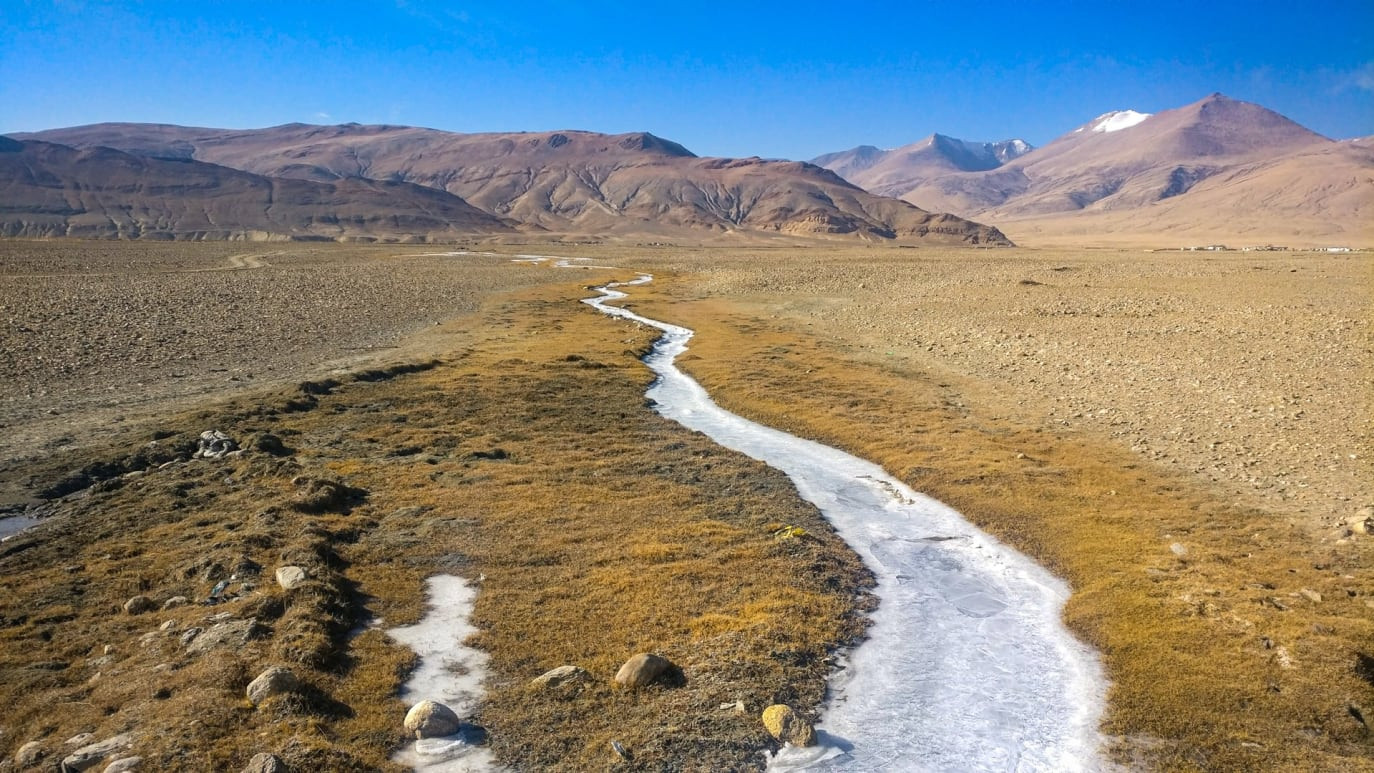 Ladakh's Frozen Marshes: Habitat of the Elusive Pallas's Cat
Ladakh's Frozen Marshes: Habitat of the Elusive Pallas's Cat
In early 2017, after six enriching years in the forests of Central India, I embraced an opportunity to manage the Snow Leopard Lodge in Ulley, Ladakh. My new role provided a precious few months to explore the Trans-Himalayan wilderness and immerse myself in the Ladakhi culture. During this period, I was fortunate to receive guidance from individuals like David Sonam of Leh and Dr. Tsewang Namgyal of the Snow Leopard Conservancy. My travels across the region unveiled a stunning array of wildlife – ungulates, wolves, foxes, snow leopards, brown bears, pikas, voles, and unique birdlife. I even had the privilege of observing a Eurasian otter hunting in the Indus River’s clear waters for twenty minutes. One particular exploratory trip, focused on spotting Tibetan larks, Tibetan gazelles, and raptors, led me to Hanle village, near the eastern edge of the Changthang Plateau. David Sonam had shared exciting news: the Pallas’s cat, locally known as ribilik, had been sighted around Hanle on several occasions. Armed with this information, my driver, spotter, and friend Stanzin Namgail, and I set out with high hopes, diligently searching the expansive frozen marshes and hills surrounding Hanle. While we encountered other fascinating creatures, my elusive cat remained unseen. Sonam Dorje of Padma Homestay, a knowledgeable local birder and naturalist, joined our search, but after days of effort, we had to concede defeat, at least for then. My encounter with the Pallas cat would have to wait.
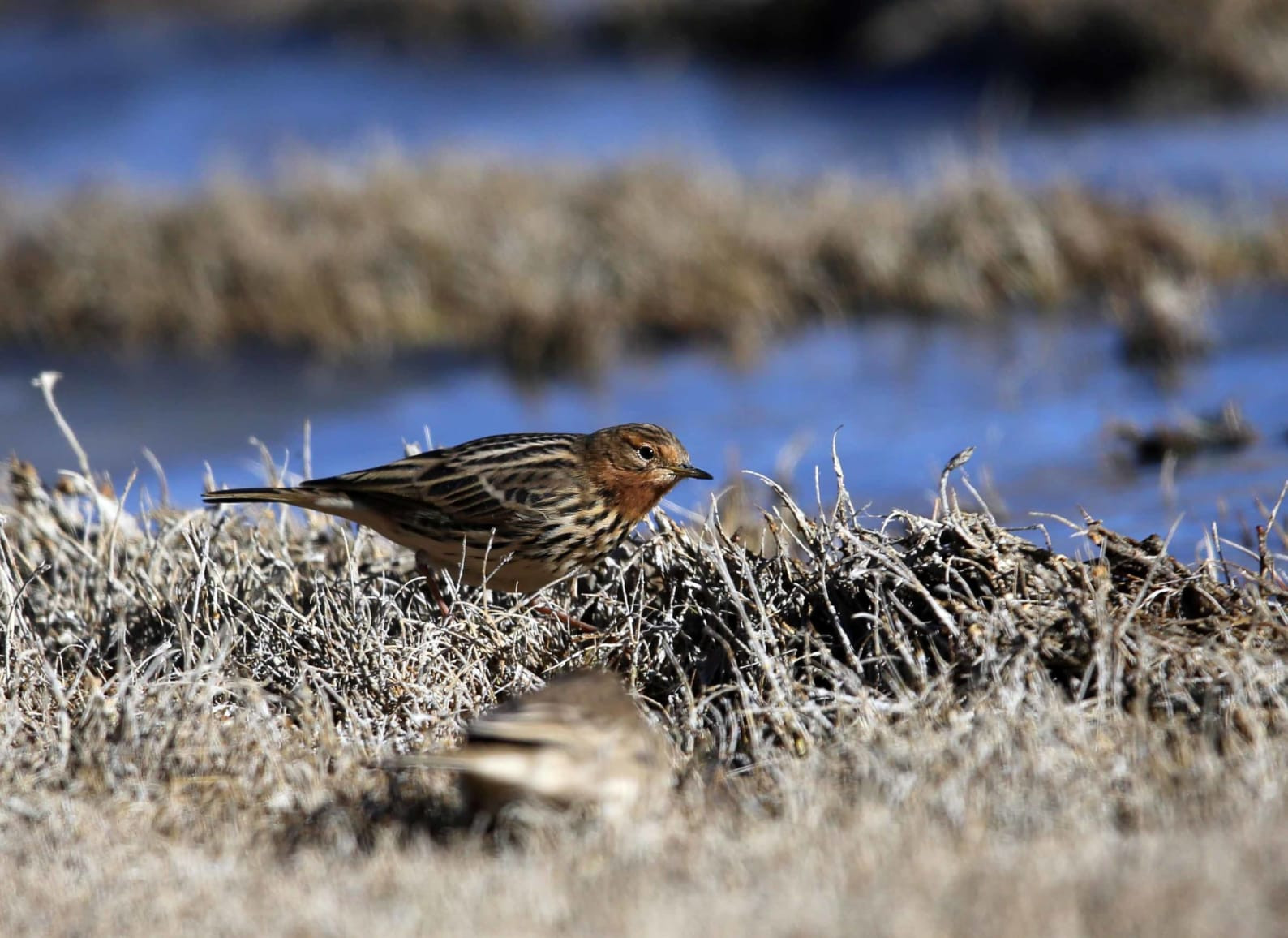 Red-Throated Pipit Amidst Ladakh's Barren Beauty
Red-Throated Pipit Amidst Ladakh's Barren Beauty
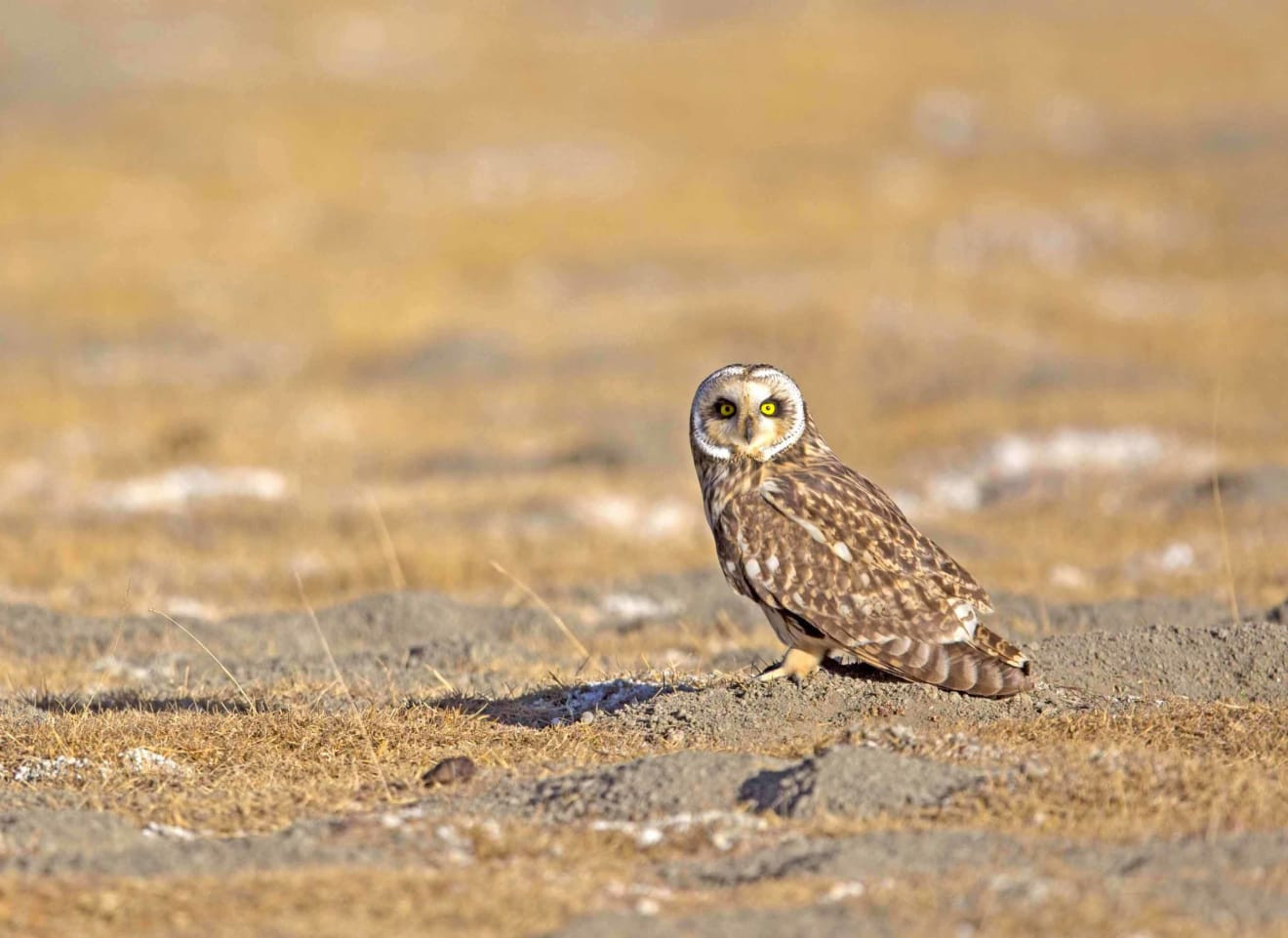 Short-eared Owl in Flight over Ladakh Landscape
Short-eared Owl in Flight over Ladakh Landscape
Later in November 2017, as winter’s grip tightened in Ladakh, I accompanied a Wildscapes photographer on a mission to capture the rising full moon juxtaposed with wildlife. After thorough research, I identified the Kalak Tal Tal plateau near Hanle as the ideal location. Following a few days of acclimatization, we, along with our driver Stanzin and Abhishek Gulshan, a birder and friend from Delhi, embarked on the journey to Hanle via Pangong Lake, where we spent the night. The next day’s 160 km drive to Hanle stretched to eight hours, slowed by photographic opportunities, challenging road conditions, and the movement of large herds of pashmina goats with their Changpa herders. The barren slopes and rocky cliffs of Changthang’s cold desert revealed avian treasures such as the merlin, red-throated pipit, sandgrouse, and saker falcon, alongside herds of kiang and bharal.
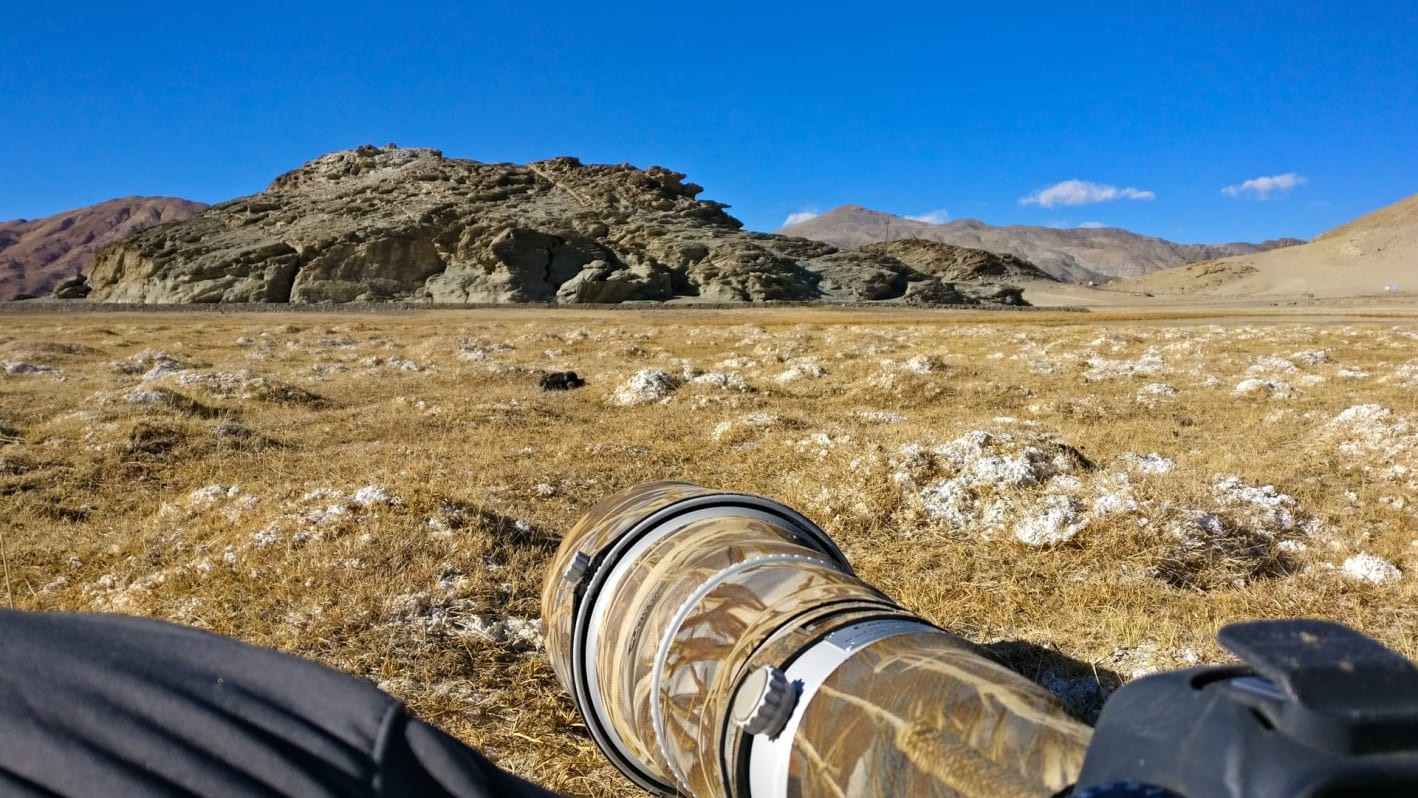 Anticipation Builds: Searching for Pallas's Cat in Hanle
Anticipation Builds: Searching for Pallas's Cat in Hanle
Upon reaching Hanle, our host Sonam Dorje greeted me with an unexpected and encouraging, “Ribilik is baar mil jayega” (you will see the Pallas’s cat this time), even before the customary “julley” or hello. Sonam recounted recent sightings by himself and friends from the previous week and showed me images taken just the day before. A Pallas’s cat had established itself in a rocky outcrop overlooking the Hanle marshes, becoming the focal point of sightings that week. The following morning, we were out before dawn, pursuing the setting moon across the Hanle marshes. As we drove, our vehicle headlights momentarily illuminated a furry creature moving on a mound before it vanished. I was certain it was the Pallas cat I had long awaited, but my companions were less convinced, suggesting it might have been a fox. Perhaps my eagerness was clouding my judgment.
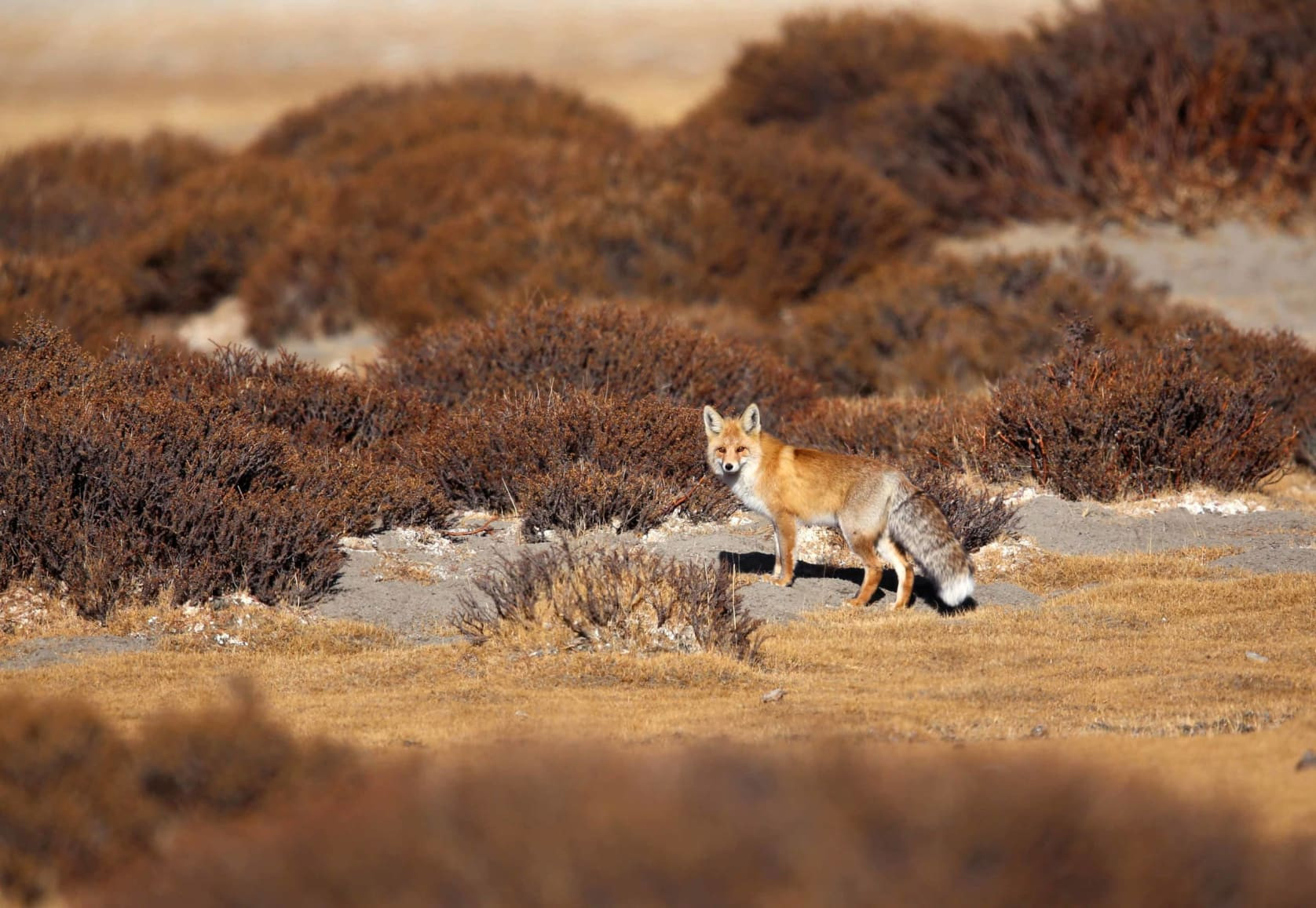 Red Fox Encounter in Ladakh's High Altitude
Red Fox Encounter in Ladakh's High Altitude
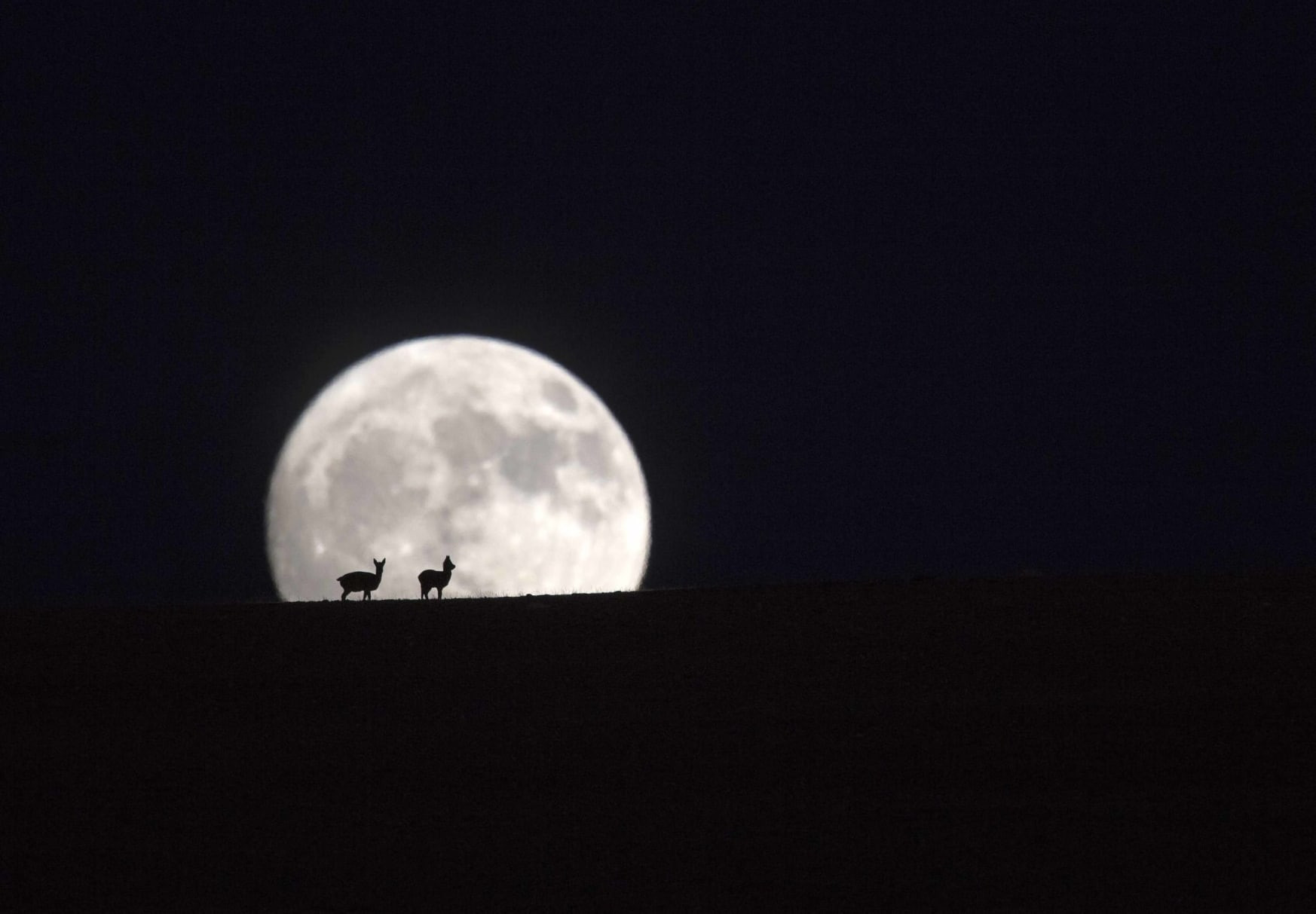 Tibetan Gazelle Silhouetted by Moonlight in Ladakh
Tibetan Gazelle Silhouetted by Moonlight in Ladakh
As the sun ascended, we returned to the “magic rock,” meticulously examining every crack and crevice for half an hour. Disappointingly, the Pallas cat remained elusive. Instead, we observed a few dogs cornering a red fox atop the rocks and an upland buzzard focused on a vole emerging from its burrow. We then proceeded to the Kala Tal Tal plateau to scout a location for the evening’s moon photography, discovering a flat area perfectly suited for the photographer’s vision. That night was exceptional, yielding some of the most stunning wilderness photographs I had ever witnessed. One of my captures featured Tibetan gazelles against the backdrop of the full moon.
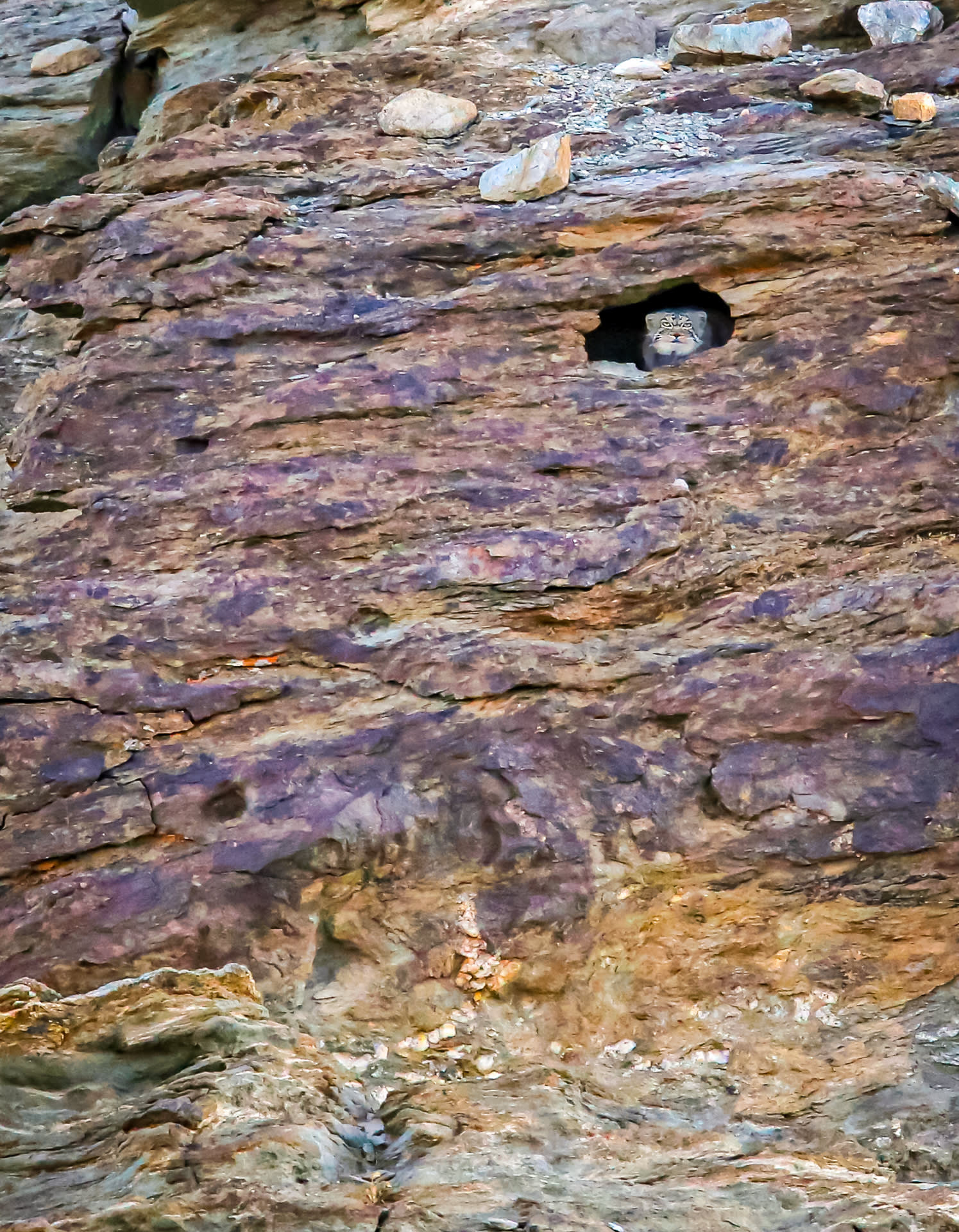 Pallas's Cat Portrait: Elusive Wildlife of Ladakh
Pallas's Cat Portrait: Elusive Wildlife of Ladakh
On our final full day in Hanle, I decided to forgo the morning moon chase and instead walked towards the special rocky outcrop, the reputed home of our elusive ribilik. The pre-dawn walk was lengthy, punctuated by frequent stops to scan the marshes for any hint of movement in the dim light. Upon reaching the rock and after ten minutes of binocular scanning, it became clear the cat was not in its usual spot. Undeterred, we circled the marshes, reaching the opposite side of the mound with smaller caves, meticulously checking cracks and dark recesses. In one of these crevices, a pale shape caught my eye, though the low light offered little detail. Boosting the ISO on my camera, I took a series of photos, hoping for a clearer image. Zooming in on the first shot, I could discern two eyes, a mouth, whiskers, and distinctive dark streaks on its cheeks. I had finally found my cat – the ribilik, the Pallas’s cat!
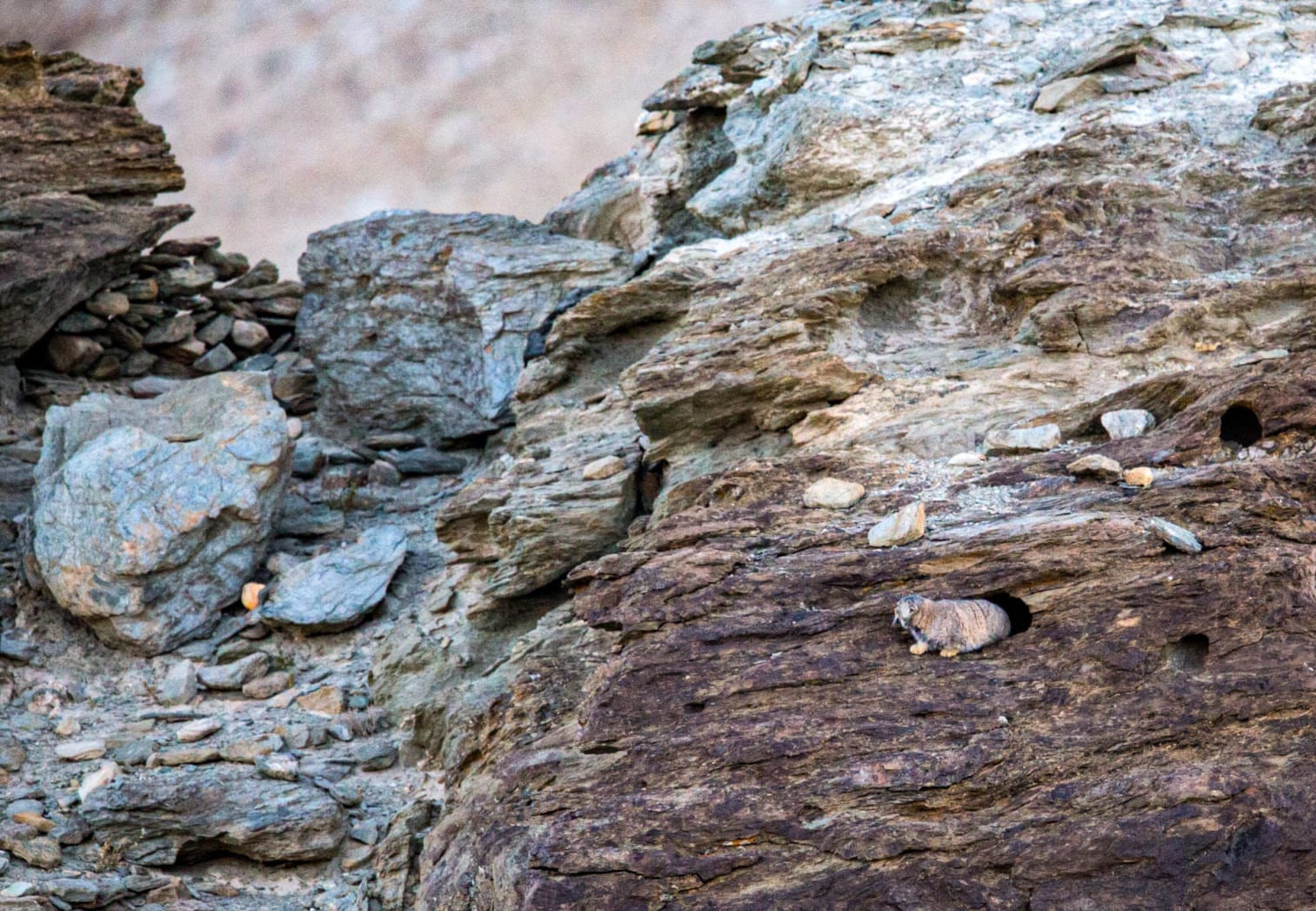 Pallas's Cat Emerging: A Moment of Discovery in Ladakh
Pallas's Cat Emerging: A Moment of Discovery in Ladakh
I nearly exclaimed in excitement, but the biting cold thankfully restrained me. We observed the Pallas cat from a respectful distance for the next half hour. After some time, it emerged from the cave and ascended to the rock’s summit to bask in the morning sun. No image or video I had previously seen had prepared me for the reality of witnessing this creature. Until that moment, I had primarily seen headshots. Now, a small, greyish-brown ball of fur moved in an extraordinary manner. Its legs were almost invisible, concealed by the long fur that brushed the ground on either side, its pace slow and fluid – reminiscent of a stout millipede. Finally, after what felt like an age, the ribilik reached the rock’s peak, revealing its full form as the rising sun illuminated its coat. It was a breathtaking spectacle, far surpassing any photograph’s ability to capture. Throughout the day, the cat repeatedly emerged from and retreated into its den, granting us numerous sightings as it sunned itself, preened its fur, and surveyed its vast domain from its rocky vantage point. Horned larks were the only other living beings that seemed to resent the cat’s presence, becoming agitated whenever it appeared, even diving close to its head, perhaps in an attempt to provoke it.
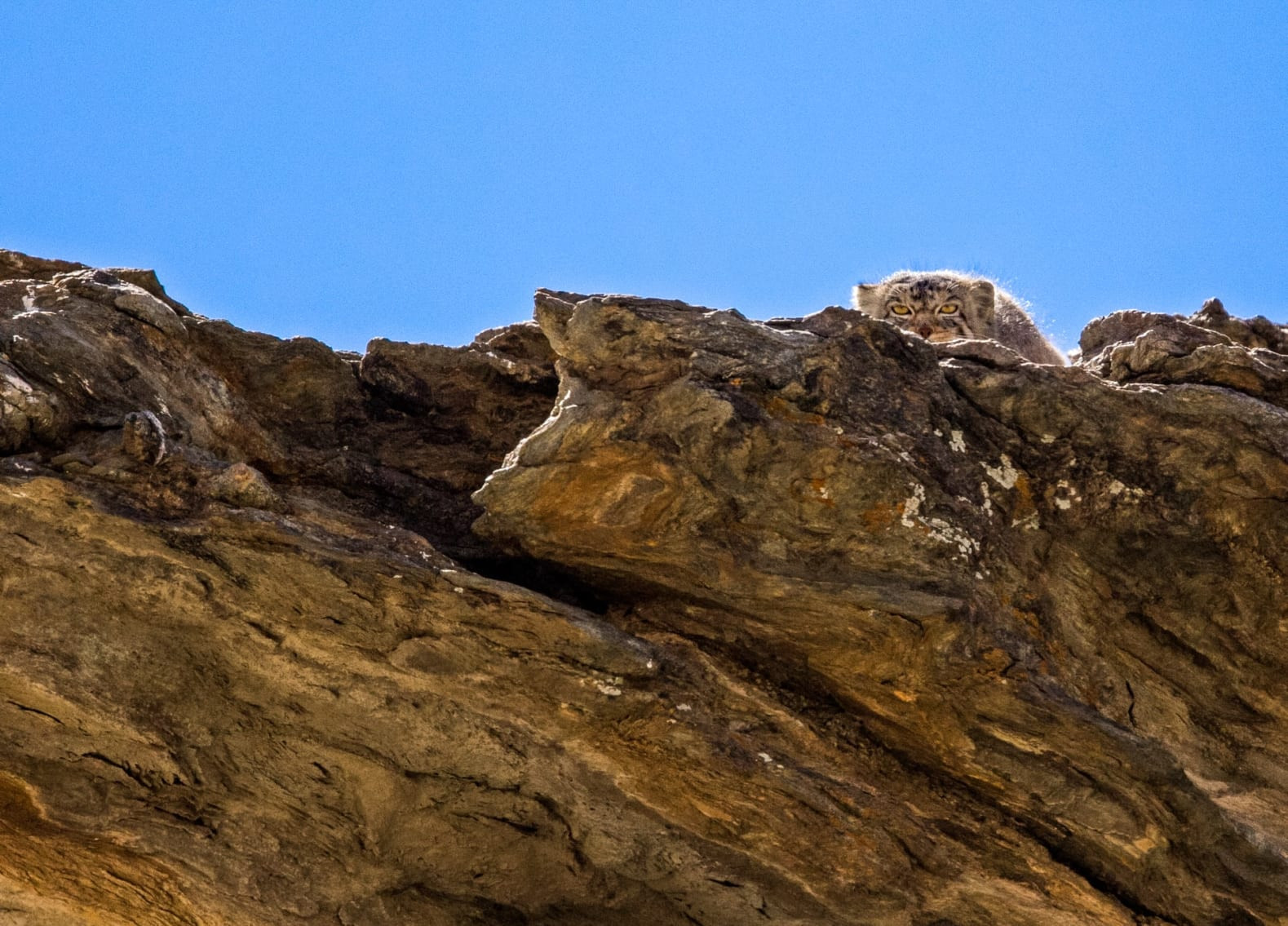 Pallas's Cat Stares: An Unforgettable Encounter in the Himalayas
Pallas's Cat Stares: An Unforgettable Encounter in the Himalayas
Later that day, we were joined by acclaimed filmmaker Sandesh Kadur, who was also seeking to film this elusive Trans-Himalayan cat. He successfully captured remarkable footage of the Pallas cat during its various appearances. We observed limited behavioral patterns, except for the cat depositing its scat. Sandesh explained that, similar to a rhino’s midden, the scat serves as a form of communication. He also shared insights into other aspects of Pallas cat behavior gleaned from past encounters and information from colleagues working in the Mongolian steppe. Data on Pallas’s cats in India remains scarce, with the majority of scientific knowledge originating from the Central Asian steppes of Mongolia. I subsequently learned from the Snow Leopard Conservancy that Pallas’s cats have been recorded in various locations across Ladakh, consistently near marshes or lakes above a certain altitude. Camera trap records and habitat data collected by the Conservancy, combined with the enthusiasm of local experts like Sonam Dorje of Hanle, are crucial steps towards a more comprehensive understanding and effective conservation of the extraordinary ribilik of the Trans-Himalayas.
[
